Original: Huang Haiqing Edge Computing Community
At the third Edge Computing Technology Seminar in 2019, Huawei’s Senior Industry Development Manager and Vice Chairman of the ECC Demand and Overall Group, Huang Haiqing, delivered a keynote speech titled “Thoughts and Practices of ECC and Huawei in the Field of Edge Computing“. This article is based on Huang Haiqing’s understanding and reflections on edge computing during his speech.
Firstly, we believe that the rise of edge computing should have occurred in the past three to four years, and the background of its emergence is the digital transformation of the real economy. This wave of digitalization of the real economy is characterized by the perception of everything, the interconnection of everything, and the intelligence of everything. These three characteristics cannot be effectively solved solely by cloud computing, such as issues related to real-time performance, bandwidth, security, privacy, and so on. In this context, edge computing has gradually emerged.
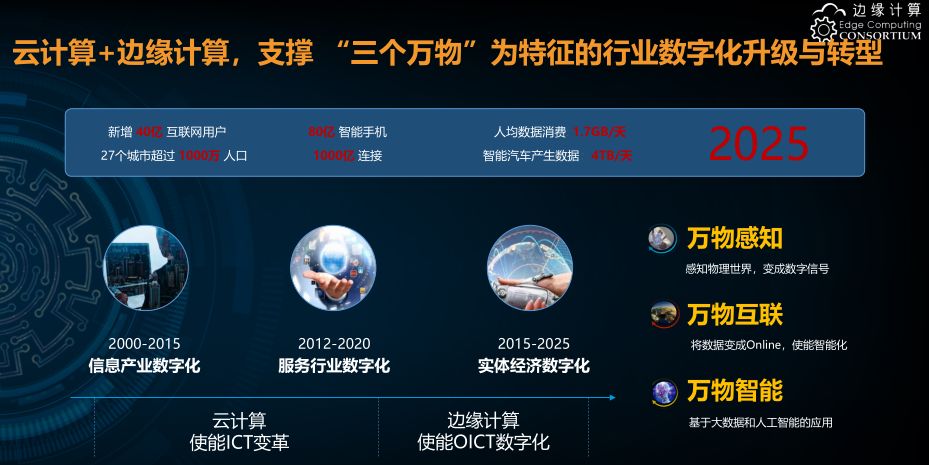
We share several industry demand characteristics for edge computing and the opportunities that have emerged in this context. First, let’s look at the industry. 1. Under the backdrop of Industry 4.0 and smart manufacturing, the traditional architecture of the industry is being restructured: a three-layer flat interconnection architecture of cloud + edge + devices. In this process, why is edge computing valuable? The core of edge computing solves the problems of network islands, data islands, and business islands in the traditional five-layer architecture, while better supporting flexible manufacturing and bringing value innovation capabilities from technology to business.
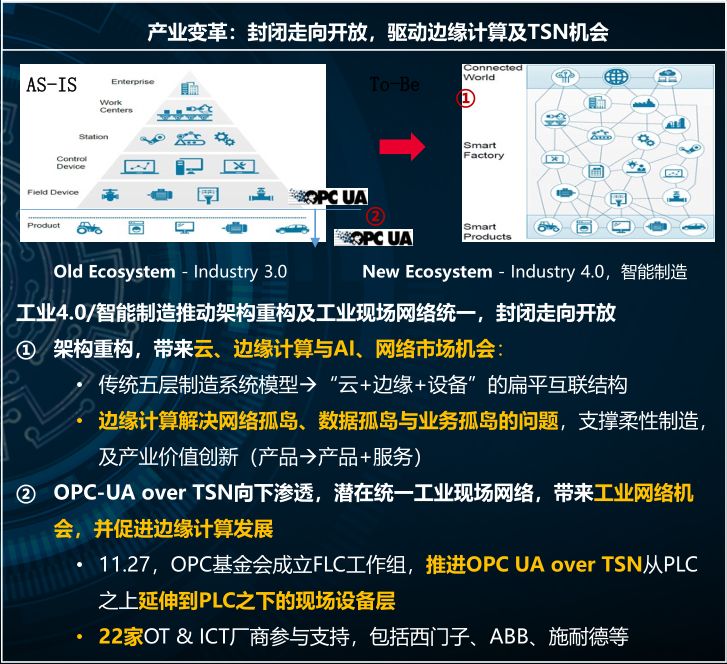
2. OPC-UA over TSN penetration, the fragmentation problem of edge computing is particularly evident in the industry. For example, a relatively good solution currently in the industry can solve the fragmentation of edge computing. OPC-UA over TSN was originally more focused on PLC and above layers. In November last year, the FLC working group was established under the OPC Foundation, with the aim of exploring how to utilize OPC UA over TSN technology requirements below the PLC level, to understand the protocol specifications and define them clearly.
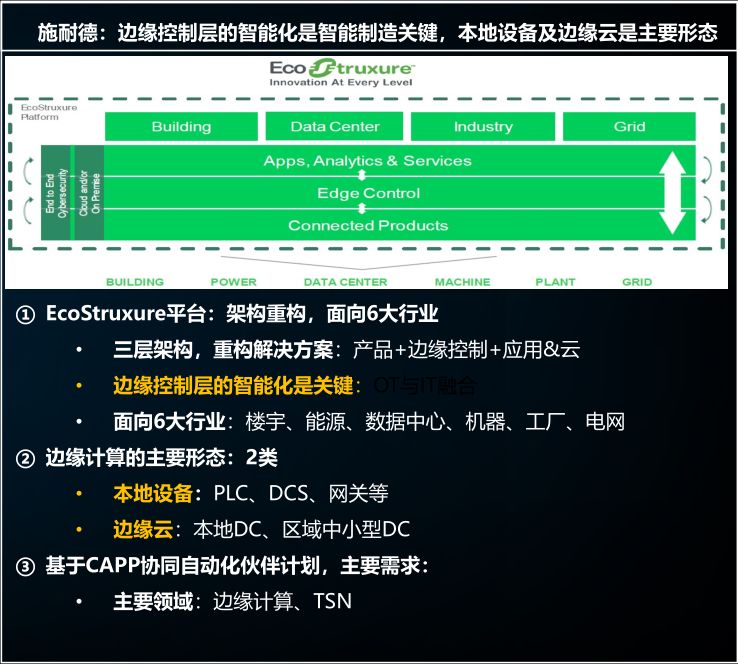
Actually, under the backdrop of the industry, giants like Schneider have already begun exploring around the major trends. We see that Schneider has clearly stated that they will reconstruct the original architecture based on cloud + edge control + products at three levels, specifically emphasizing that the intelligence of the edge control layer is a very core point, mentioning the main forms of edge computing, including local devices and edge clouds; at the same time, they are conducting continuous and in-depth cooperation with Huawei.
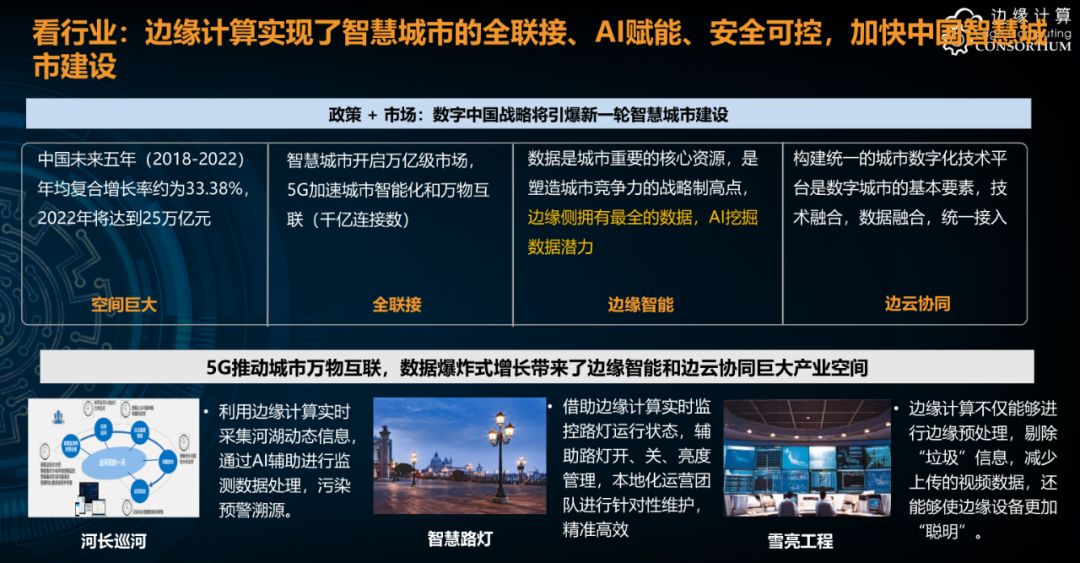
Smart cities have become a global hotspot since IBM proposed the concept of a smart earth in 2008; in 2017, China released the Digital China strategy, igniting a new round of smart city construction. The edge side has the most comprehensive demands, thus the new round of smart city construction requires support from edge intelligence, edge collaboration, and edge capabilities; at the same time, 5G development will greatly promote the interconnection of everything in cities, which will also significantly boost the development of the edge computing industry. For example, in the river chief patrol scenario, edge computing is used to collect dynamic information about rivers and lakes in real-time, with AI assisting in monitoring data processing and pollution warning tracing; in the smart streetlight scenario, edge computing is used to monitor the operating status of streetlights in real-time, assisting in the management of streetlight on/off and brightness, with localized operation teams performing targeted maintenance efficiently; in the bright project scenario, edge computing can not only perform edge preprocessing to eliminate ‘garbage’ information, reducing the uploaded video data, but also make edge devices smarter.
Operators. Global mainstream operators value the opportunities in the edge computing industry and are expanding their efforts in this area, transitioning from pipeline operations to computing power operations, improving 2C business experiences and strengthening 2B market capabilities.

China Unicom is committed to building an open, open-source Edge-Cloud service PaaS platform, aiming to flexibly allocate computing, storage, network, and accelerator resources to accelerate the incubation and promotion of edge services.
1、Release CUBE-Edge 2.0 white paper;
2、China Unicom will vigorously develop edge DC and launch large-scale pilots in 15 provinces and cities nationwide;
3、Lead the international standard project for IoT requirements for Edge computing;
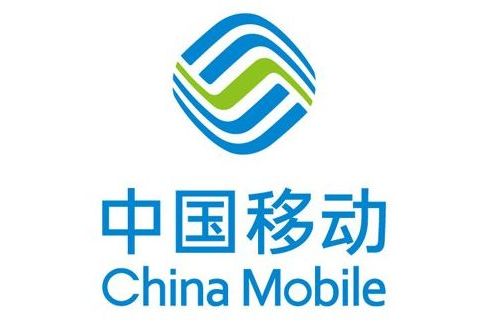
China Mobile has elevated edge computing to be on par with 5G as a company strategy. China Mobile will elevate edge computing to be on par with 5G, promoting its future expansion from pipeline operations (traffic monetization) to computing power operations (service monetization).
1、Establish the China Mobile Edge Computing Open Laboratory;
2、Release the China Mobile Edge Computing Technology White Paper;
3、Announce the Pioneer 300 plan.

AT&T positions edge computing as one of the three pillars of its 5G strategy. AT&T has already accessed edge computing for mobile and fixed wireless applications, utilizing LTE or 5G connections for deployment. They have initiated Akraino to accelerate the construction and commercial deployment of the edge computing ecosystem through open source.

The Global System for Mobile Communications Association, abbreviated as GSMA, was established in 1987 and is the industry organization for the global mobile communications field. Its members now include nearly 800 mobile operators from 220 countries and more than 230 other enterprises in the broader mobile ecosystem, including mobile device manufacturers, software companies, equipment suppliers, internet companies, as well as enterprises in finance, healthcare, media, transportation, and public utilities. GSMA believes that edge computing is an important development direction for operators in the future:
1、How Edge Cloud can help operators reduce deployment costs and accelerate deployment speed for new services such as Cloud VR/AR;
2、How edge computing can promote the current image processing capabilities in smart cities and smart manufacturing;
GSMA Dynamics:
1、GSMA released the edge computing white paper at MWC 2019: Distributed Edge Cloud: Definitions,
Dynamics And Drivers,
2、GSMA plans to accelerate the application of edge computing in operators by promoting typical PoC.
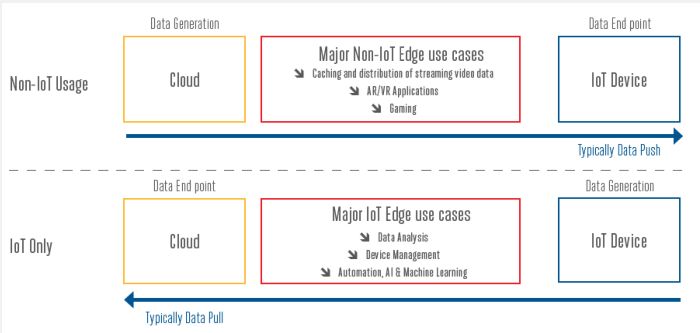
GSMA defines two major forms of edge computing:
Core technologies for operator edge computing:
1、Multi-form I hardware (edge cloud, all-in-one machine, heterogeneous data processing cloud gateway, etc.);
2、Lightweight cloud-native PaaS (microservices, Serverless, etc.);
3、Security (physical security, platform security, application security, etc.).
What directions is edge computing technology heading towards?
Edge computing needs to collaborate with cloud computing to maximize the enhancement of their application value, which is widely recognized in the industry. However, what exactly is the value and connotation of edge-cloud collaboration, and what aspects does it involve? There has been a lack of consensus on these issues in the industry. Last year, the ECC Industry Alliance attempted to start from the main scenarios to initially outline the full view of edge-cloud collaboration. We believe that edge-cloud collaboration will generally involve three layers and six types of collaboration, that is, from IaaS to PaaS to SaaS three levels, the three levels on the edge side and the three levels on the cloud side must work together, implemented in specific scenarios, not all business scenarios will necessarily be included. This six types should be the current stage understanding of the full view of edge-cloud collaboration.
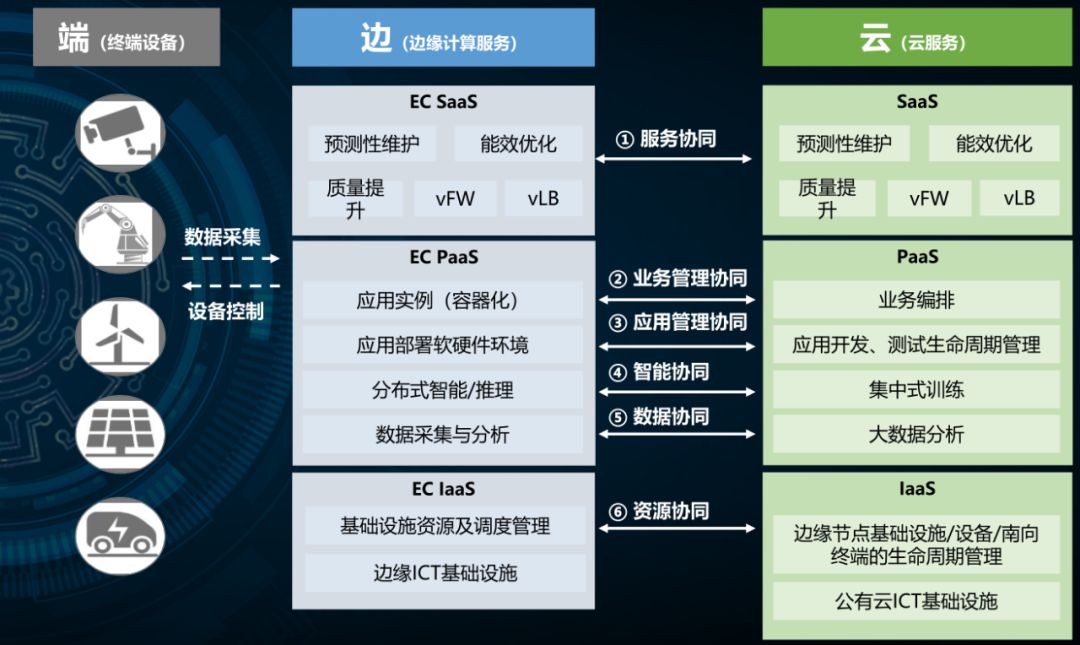
-
Service collaboration; the cloud provides SaaS distribution strategies, those SaaS deployed in the cloud. Those deployed at the edge (applications collaborate with each other).
-
Business management collaboration; the edge provides modular, microservice applications, while the cloud provides business orchestration management for edge applications.
-
Application management collaboration; edge nodes provide the deployment and operational environment for applications, and manage and schedule them; the cloud provides application development testing environments and lifecycle management.
-
Intelligent collaboration; edge nodes perform inference according to AI models, while the cloud conducts centralized model training and issues models to the edge.
-
Data collaboration; edge nodes are responsible for collecting terminal data, performing preliminary processing, and uploading the results to the cloud, while the cloud provides massive data storage, analysis, and value mining.
-
Resource collaboration; edge nodes provide infrastructure resources, have local scheduling and management capabilities, while accepting and executing cloud-side resource scheduling management strategies (including devices, resources, network connections).
Edge computing is transitioning from 1.0 to 2.0, if 1.0 is more about conceptual definition, mainly aimed at promoting industry consensus; 2.0 is more concerned with technology and capability building, thus promoting the practical implementation of edge computing. The core viewpoints of edge computing 2.0 include landing forms, we believe the main forms are edge cloud and cloud-based gateways, of course, there are many subdivisions.
Edge clouds mainly provide comprehensive computing capabilities near the site, supporting scenarios such as smart parks, safe cities, and intelligent manufacturing, bringing the capabilities of central clouds closer to the edge, which is the next growth point for innovation breakthroughs in cloud computing.
Cloud-based gateways are aggregation nodes for enterprise/industry data, representing the evolution of gateway devices based on cloud computing technology, mainly through diverse connections, real-time processing, cloud-based management, and artificial intelligence capabilities, enabling industry digitization through edge-cloud collaboration.
A software platform must introduce cloud architecture and cloud technology to achieve end-to-end real-time, collaborative intelligence, reliable, and dynamically reconfigurable capabilities.
A hardware platform: primarily heterogeneous computing, needs to consider support for ARM+X86+GPU+NPU+FPGA heterogeneous computing capabilities.
The core features: edge-cloud collaboration and edge intelligence.
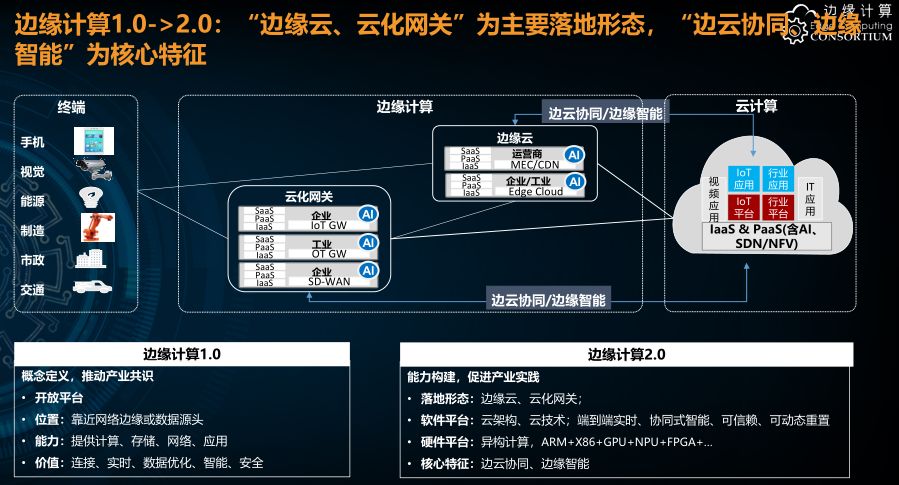
From a trend perspective, the development of edge computing is divided into three stages.
The first stage roughly spans 2015 to 2017, concept incubation, industry consensus
Industry consensus: edge computing and its value have become industry consensus
Concept generalization: fog computing, edge computing, node computing, mobile edge computing, open edge computing
Unclear boundaries: OT believes that 20 years ago, industrial sites PLC was it, Hikvision believes that smart cameras are it, Cisco believes that it is above the cloud and below the terminal.
The second stage is the current one, 2018 to 2020, mainly focusing on further exploration and landing
Value landing scenarios: from generalized concepts, gradually focusing on cloud-edge and IoT edge value scenarios.
Business essence: the extension and evolution of cloud computing nodes outside data centers. “Edge-cloud collaboration, edge intelligence” is the core capability.
The third stage is from 2020 onwards, beginning large-scale development
Bringing richer application scenarios: from value-added services (such as predictive maintenance) to control systems (such as vPLC)
And broader industry coverage: from manufacturing/operators/energy to general industry (such as transportation, enterprises, smart homes, etc.)
Edge computing has formed an industry consensus, transitioning from generalized concepts to further focused exploration and landing. The next 3~5 years will be a critical period for industry development.
Further reading:
Understanding Edge Computing Easily
Edge computing (Edge computing) refers to the behavior of collecting and analyzing data occurring close to local devices and networks where the data is generated, as opposed to necessarily transmitting data to centralized cloud computing resources for processing. Edge computing is also known as distributed cloud computing, fog computing, or the fourth-generation data center.
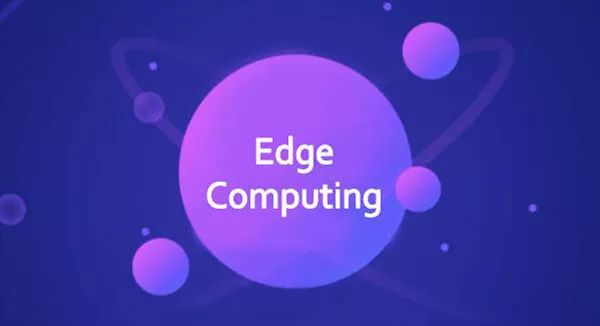
Many people may have had this experience: accidentally burning their hand with fire or scalding it with boiling water, and the person will immediately pull their hand away. This reaction is a human self-organizing reflex. Let’s assume that if our hand were to react based on the information gathered by our brain before taking action, what would that scenario look like?
Assuming we label human reflexes as edge computing and the brain’s response as cloud computing, then we can easily and profoundly understand the difference between edge computing and cloud computing.
1. What is Edge Computing
Edge computing (Edge computing) refers to the behavior of collecting and analyzing data occurring close to local devices and networks where the data is generated, rather than necessarily transmitting data to centralized cloud resources for processing. Edge computing is also known as distributed cloud computing, fog computing, or the fourth-generation data center.
Edge computing first appeared through the virtualization of network services on WAN networks. Initially driven by a platform that adapted to cloud computing users’ habits, this is also the origin of the fog computing concept proposed by Cisco in 2011. With the emergence of new edge computing capabilities, edge computing no longer needs to build centralized data centers, creating the ability to deploy potentially thousands of large-scale distributed nodes.
2. Why is Edge Computing Needed
Gartner predicts that by 2020, there will be as many as 25 billion smart devices connected to the internet globally, generating 50 trillion GB of data, which is more than five times the global data volume in 2015. If all the data generated by these devices were to be transmitted to the cloud, it would pose a tremendous challenge to network bandwidth, traffic cost control, and cloud storage capacity. At the same time, some applications require timely responses, such as fault prediction for factory machinery, where latency means loss. Additionally, some edge devices involve personal privacy and security. To address the challenges of massive data transmission, storage, and cloud computing capacity in IoT scenarios, leading cloud computing vendors have launched edge computing products. By placing some data analysis functions near the application scenarios (at the terminal or gateway), this nearby intelligent service can meet the key needs of industry digitization in terms of agile connectivity, real-time business, data optimization, application intelligence, security, and privacy protection.
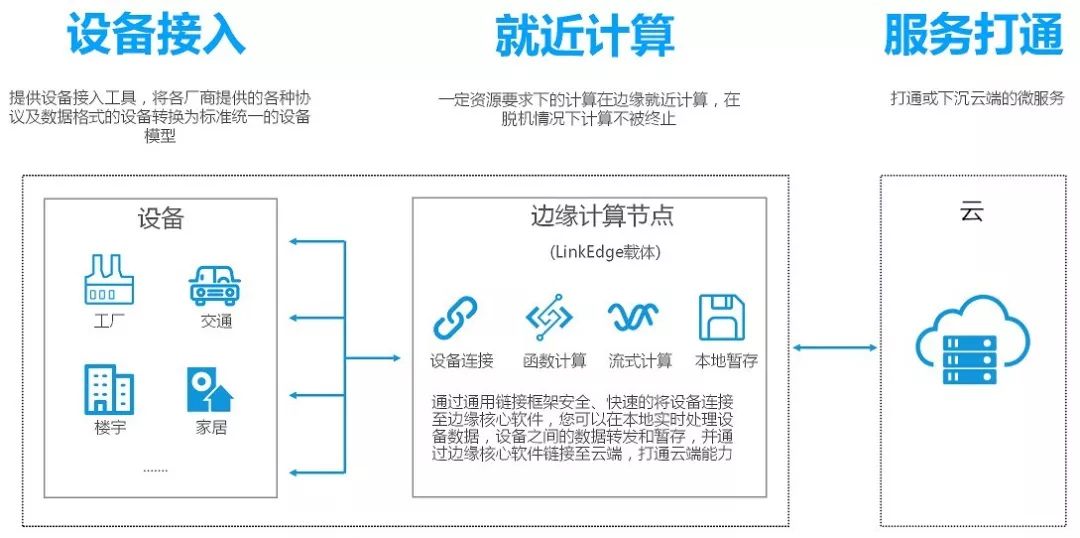
Origin of Edge Computing
Edge computing is a concept that has only emerged in recent years, arising from the inadequacies of cloud computing in practical applications:
Example 1: When the manufacturing industry builds smart factories, there will be a large number of intelligent terminals and devices accessing through industrial networks, and the daily business data that enterprises need to compute and process is becoming increasingly vast. At the same time, there are many scenarios in the industry that require real-time processing, needing to respond in milliseconds. Due to network limitations, cloud computing architectures struggle to achieve real-time responses. (Delay means accidents)
Example 2: Autonomous vehicles need to respond to their surrounding environment while moving at high speed, making response time an extremely important metric. If the car travels at 65 miles per hour, even a few milliseconds of delay in emergency braking response could increase the braking distance by several feet, which could be the difference between an accident and no accident. (Delay means life)
Example 3: Through a large number of sensors, data from oilfield production is automatically collected, but if each sensor sends a connection to the cloud, the massive data would put enormous pressure on the network. (Massive means congestion)
Example 4: If your air conditioning system is smart-controlled and relies on cloud computing, but your home has no power outage yet loses internet connection, what would you do? Unable to control via the cloud, even if you are sweating profusely, the air conditioning becomes a decoration; isn’t that quite embarrassing? Edge computing solves this control issue without a network. (No network, no service)
1. Differences between Cloud Computing and Edge Computing

2. Several Characteristics of Edge Computing
✓ Distributed and low-latency computing
Edge computing focuses on the analysis of real-time, short-cycle data, enabling better support for local business’s real-time intelligent processing and execution.
✓ Higher efficiency
Since edge computing is closer to users, filtering and analyzing data at the edge nodes results in higher efficiency.
✓ More intelligent
The combination of AI and edge computing allows edge computing to not only compute but also add a layer of intelligence.
✓ More energy-efficient
The combination of cloud computing and edge computing costs only 39% of using cloud computing alone.
✓ Relieving traffic pressure
By performing some simple data processing at the edge nodes during cloud transmission, it can improve device response times and reduce data traffic from the device to the cloud.

In IoT scenarios, each smart device generates a large amount of data, and transmitting such massive data from local to cloud requires consuming a lot of network bandwidth. To accelerate service and compute processing time, moving computation from the cloud to edge nodes where data is collected is the inevitable choice.

As shown in the table above, 30 years ago, computing typically occurred on centralized mainframes. Twenty years ago, with the development of PCs, C/S architecture became popular, and task processing turned into a distributed model, with clients processing business logic and databases storing and exchanging data. After another decade of development, to enhance user experience and provide more agile software upgrades and improvements, the B/S architecture became mainstream, with business processing and storage centralized in the cloud. Today, as more and more smart devices are connected to the cloud, the amount of data is increasing, and the computing power of smart device chips is becoming stronger, this provides the necessary conditions for using edge nodes to process and analyze initial data.
4. How to Deploy Edge Computing
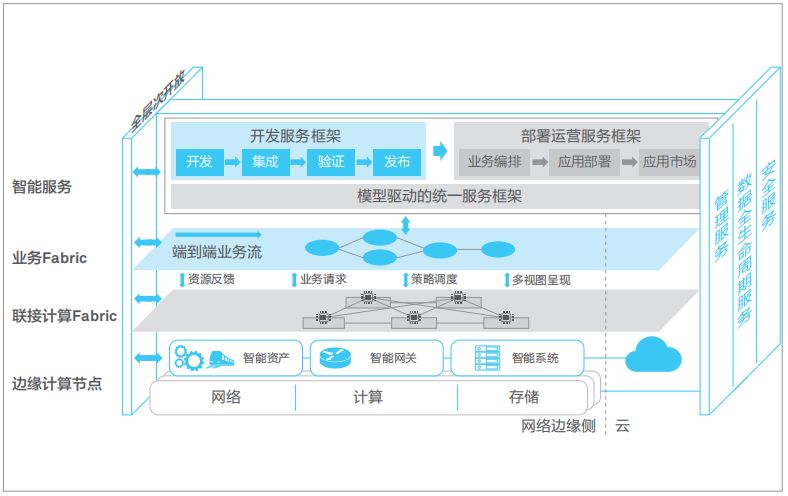
In IoT scenarios, each smart device generates a large amount of data, and transmitting such massive data from local to cloud requires consuming a lot of network bandwidth. To accelerate service and compute processing time, moving computation from the cloud to edge nodes where data is collected is the inevitable choice. In fact, in big data scenarios, deploying computation close to the data nodes has already been a precedent. MapReduce in Hadoop efficiently processes massive data stored in HDFS by deploying mappers and reducers to the nodes where data is stored.
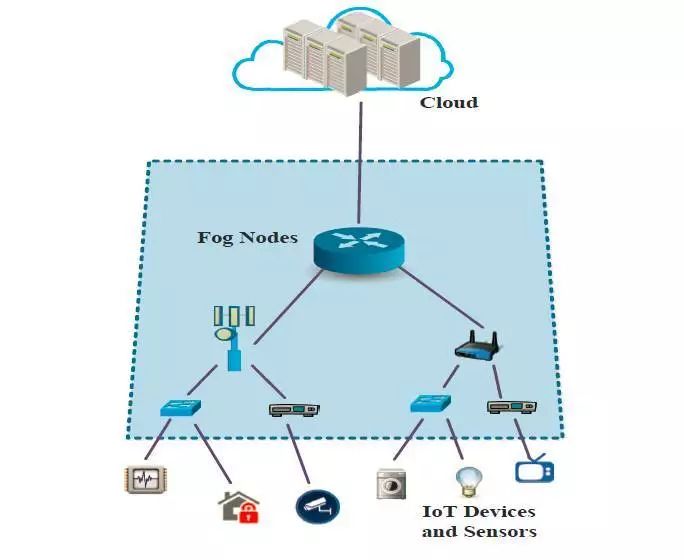
Edge computing environments are a subset of numerous elements that constitute the IoT ecosystem, eliminating management, security, and analysis functions. Edge computing is a “bridge” connecting the physical and virtual worlds.
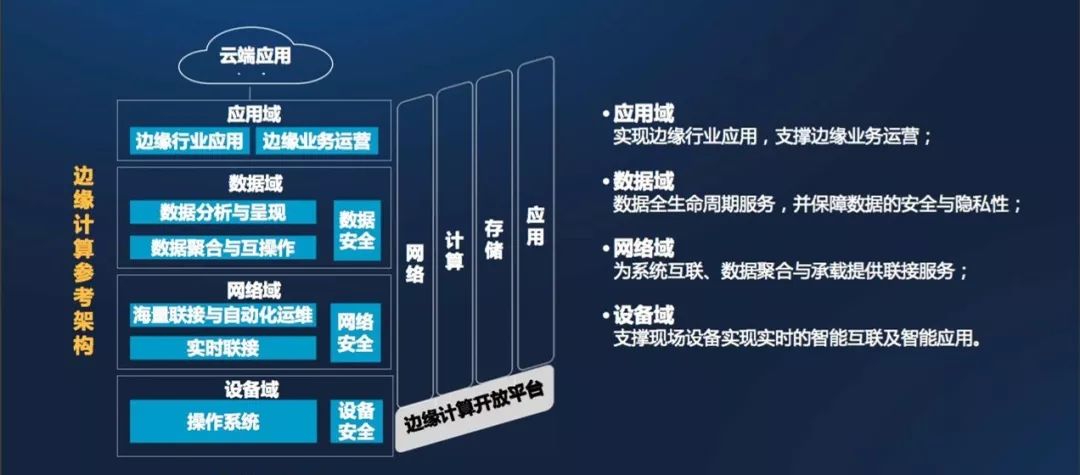
1. Device domain: In this layer, edge computing can directly compute and process the perceived information. For example, in the manufacturing field, it can monitor devices in a timely manner, enabling preventive maintenance; in video and audio collection, it can directly deploy intelligent identification capabilities; or like a smartphone, it can convert voice input into text output.
2. Network domain: By deploying computing capabilities, automatic conversion of various network protocols can be achieved, and data formats can be standardized. To solve the problem of data heterogeneity in physical networks, edge computing needs to be deployed in the network domain to achieve standardization of data formats and data transmission (for example, converting all perceived data into MQTT type data and transmitting it via HTTP). At the same time, edge computing in the network domain can also intelligently manage “fusion networks”, ensuring network redundancy, security, and further participating in network optimization work.
3. Data domain: Edge computing makes data management smarter and storage methods more flexible. First, edge computing can analyze the integrity and consistency of data and perform data cleansing to eliminate “dirty” data from the system. Secondly, edge computing can dynamically deploy computing and storage capabilities, as well as system loads. Finally, edge computing can maintain efficient collaboration with cloud computing and reasonably share computational tasks.
4. Application domain: Edge computing provides localized business logic and application intelligence. It enables applications to have flexible, quick response capabilities and can still provide localized application services independently in offline situations (when disconnected from the cloud).
5. Typical Application Scenarios of Edge Computing
Edge networks are basically composed of terminal devices (such as mobile phones, smart objects, etc.), edge devices (such as boundary routers, set-top boxes, bridges, base stations, wireless access points, etc.), and edge servers. These components can have the necessary performance to support edge computing. As a localized computing model, edge computing provides faster response speeds for computing service demands, typically not sending large amounts of raw data to the cloud network. Overall, edge computing does not need to actively assist IaaS, PaaS, SaaS, and other cloud services, but focuses more on terminal device ends.
The concept of edge computing arose from industrial manufacturing. In the industrial field, while cloud computing is indispensable, edge and cloud collaboration is still necessary. Single points of failure are absolutely unacceptable in industrial-grade application scenarios, so in addition to the centralized control of the cloud, the systems on the industrial site must also possess a certain vitality, capable of autonomous judgment and problem-solving. Edge computing can handle the massive data generated by factory equipment more conveniently, detect anomalies in a timely manner, and achieve better predictive monitoring, enhancing factory operational efficiency while also preventing equipment failure issues.
Besides industrial manufacturing, the growing data in the IoT era has spurred the demand for edge computing. The following are typical application scenarios of edge computing:
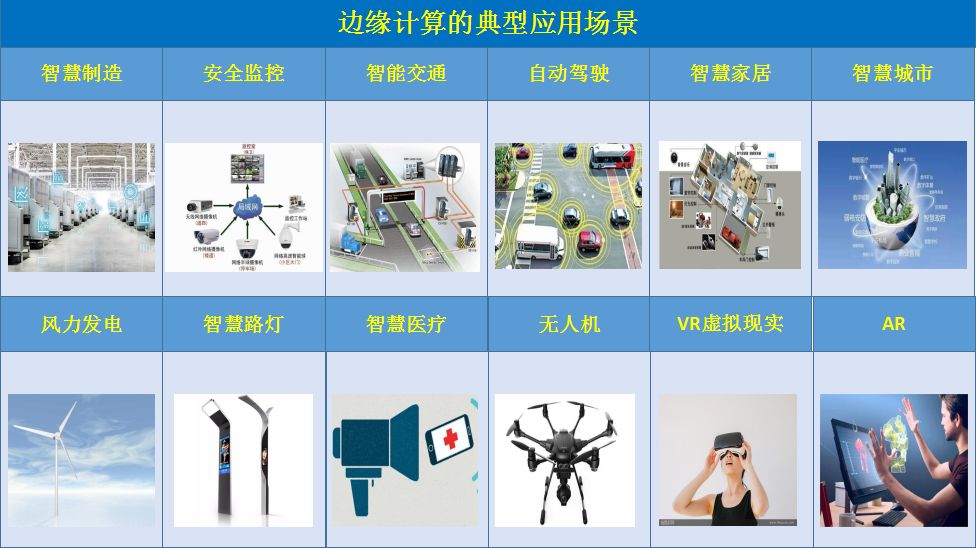
1. Industrial Manufacturing
Edge computing can more conveniently handle the massive data generated by factory equipment, detect anomalies in a timely manner, achieve better predictive monitoring, and enhance factory operational efficiency while also preventing equipment failure issues.
2. Security Monitoring, AR/VR
Edge computing provides rapid, efficient, and accurate real-time responses, driving the application of artificial intelligence in the security industry to a new level.
3. Intelligent Transportation
Intelligent traffic lights can dynamically adjust their colors based on the traffic flow on the road, improving traffic flow and reducing congestion, and can also apply in emergencies, for example: traffic lights can open a green channel for emergencies.
4. Autonomous Driving
In the process of avoiding obstacles, if autonomous vehicles follow the model of first uploading to the cloud, analyzing and processing, and then returning to the device, it would cause signal transmission delays, making traffic accidents likely in emergencies.
5. Smart Home
Many smart home devices in the home require edge computing to define the interaction scenarios among different products. Additionally, for smart homes, the security and privacy of the connected network are also important to people; edge clouds can establish encrypted channels between IoT gateways and data centers, further enhancing system security and privacy.
6. Smart Cities
Edge computing acts like the nerve endings of a city, efficiently processing urban operation issues by combining artificial intelligence with sensors distributed throughout the city, such as installing sensors on streetlight poles to collect urban road surface information and detect environmental data such as air quality, light intensity, and noise levels.
7. Smart Streetlights
Embedded sensors, actuators, computing, and storage units within streetlights can form nodes of edge computing. The data collected by sensors is sent to computing and storage nodes located at the network edge, and after processing, the results are returned to actuators for controlling the streetlights, rather than sending the data to a cloud computing center located at the network edge. This improves system real-time performance while reducing the pressure on the cloud.
8. Wind Power Generation
Deploying edge nodes on wind turbine units to collect data in real-time. Data such as wind speed and startup is uploaded to industrial gateways for optimization, converting models into algorithms or rules for immediate control of the units.
9. Healthcare
Data stored on medical devices can be used to update patients’ digital medical records. Edge computing connects these medical devices, providing reliable and up-to-date patient information to hospitals and doctors in emergencies.
10. Drones
Edge computing enables drones to inspect data and respond in real-time, widely applied in various fields, such as when a drone detects a car accident, it can provide valuable information to nearby pedestrians.
6. Conclusion
According to IDC predictions, more than 50% of data will need to be analyzed, processed, and stored at the network edge in the future. Edge computing will extend to various fields such as transportation systems, smart driving, real-time tactile control, augmented reality, and become a key enabling technology for operators’ digital transformation.
Source: “Industry Intelligence Officer”
